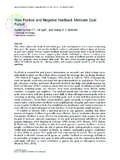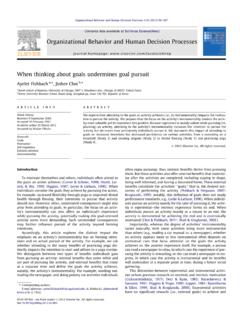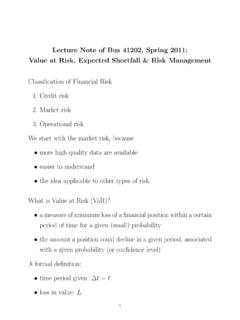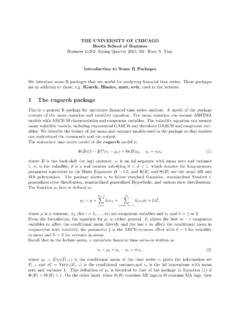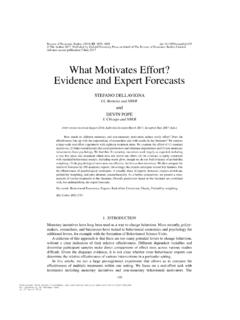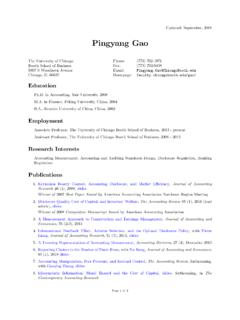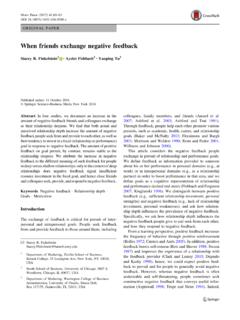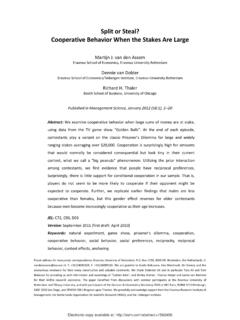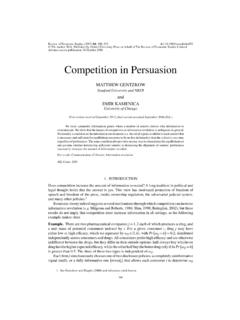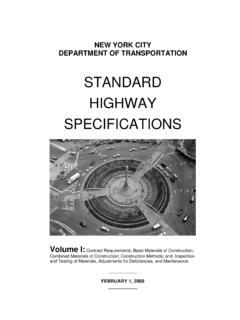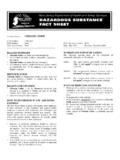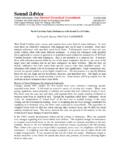Transcription of The Economic Limits of Bitcoin and the Blockchain
1 The Economic Limits of Bitcoin and the Blockchain Eric Budish June 5, 2018 AbstractThe amount of computational power devoted to anonymous, decentralized blockchainssuch as Bitcoin s must simultaneously satisfy two conditions in equilibrium: (1) a zero-profitcondition among miners, who engage in a rent-seeking competition for the prize associatedwith adding the next block to the chain; and (2) an incentive compatibility condition on thesystem s vulnerability to a majority attack , namely that the computational costs of such anattack must exceed the benefits. Together, these two equations imply that (3) the recurring, flow , payments to miners for running the Blockchain must be large relative to the one-off, stock , benefits of attacking it.
2 This is very expensive! The constraint is softer ( , stockversus stock) if both (i) the mining technology used to run the Blockchain is both scarce andnon-repurposable, and (ii) any majority attack is a sabotage in that it causes a collapse inthe Economic value of the Blockchain ; however, reliance on non-repurposable technology forsecurity and vulnerability to sabotage each raise their own concerns, and point to specificcollapse scenarios. In particular, the model suggests that Bitcoin would be majority attackedif it became sufficiently economically important , if it became a store of value akin togold which suggests that there are intrinsic Economic Limits to how economically importantit can become in the first place.
3 Project start date: Feb 18, 2018. First public draft: May 3, 2018. For the record, the first large-stakes majorityattack of a well-known cryptocurrency, the $18M attack on Bitcoin Gold, occurred a few weeks later in mid-May2018 (Wilmoth, 2018; Wong, 2018). Acknowledgments: thanks are due to Susan Athey, Vitalik Buterin, Alex Frankel, Joshua Gans, Austan Gools-bee, Zhiguo He, Joi Ito, Steve Kaplan, Anil Kashyap, Judd Kessler, Randall Kroszner, Robin Lee, Jacob Leshno,Neale Mahoney, Sendhil Mullainathan, David Parkes, John Shim, Scott Stornetta, Aviv Zohar, and seminar parti-cipants at Chicago Booth and the MIT Digital Currency Initiative. Natalia Drozdoff and Matthew O Keefe haveprovided excellent research assistance.
4 Disclosure: I do not have any financial interests in Blockchain companies orcryptocurrencies, either long or short. University of Chicago Booth School of Business, Bitcoin and the Blockchain : A Critique in 3 Rent-Seeking Competition (Among Blockchain Miners) Bitcoin is an electronic payment system that relies on a combination of cryptography and a large,anonymous, decentralized collection of participants, called miners, to verify transactions, withoutthe need of any trusted third party. The basic details, slightly simplified, are as of Bitcoin may send currency to another user by using a combination of (i) his own publicaddress (an alphanumeric string, somewhat analogous to an account number), (ii) his own privatekey ( , password associated with that address), and (iii) the recipient s public address to createa transaction with a cryptographically secure signature.
5 This signature has the property that itcan only be created by someone who knows the sender s private key (presumably the sender!), andencodes the amount of Bitcoin to be transferred from the sender to the receiver, but in a way thatan observer of the signature cannot invert the information to learn the sender s private key. So far,while magical to those unfamiliar with modern cryptography, this is completely standard. Theinnovative idea behind Bitcoin is the way these transactions are publicly recorded, to maintain apublic ledger of all transactions, called the Blockchain . Every so often (currently roughly tenminutes), a large, anonymous, decentralized collection of participants called miners competes in acomputational tournament for the right to add a new block of transactions (roughly ten minutes worth) to the public ledger.
6 The winner of the computational tournament is the first participantto solve a difficult computational problem based on both the new block and previous block oftransactions. This participant reports both the new block of transactions and the solution tothe computational problem, and the other participants, to quote from Nakamoto (2008), expresstheir acceptance of the [new] block by working on creating the next block in the chain, using thehash of the accepted block as the previous hash. The incentive issues raised by this system will be the subject of the next section. For the pur-pose of this section, assume that participants in the Bitcoin system behave as they are supposedto, , honestly.
7 LetPblockdenote the Economic reward to the miner who wins the computa-tional the moment think ofPblockas exogenous; equation (3) below will place1 For an accessible overview of the Bitcoin Blockchain system, aimed at economists, highly recommended is theinstitutional background section of Huberman, Leshno and Moallemi (2017). For empirical facts on Bitcoin usage,good starting points are Athey et al. (2016) and B hme et al. (2015). For a game-theoretic analysis of Bitcoinmining, a good starting point is Biais et al. (2017). Other helpful references include the original Bitcoin paper,Nakamoto (2008), the website (especially its Bitcoin Developer Guide), and, for a textbook lengthtreatment, Narayanan et al.
8 (2016). Huberman, Leshno and Moallemi (2017), Biais et al. (2017) and Athey et al.(2016) contain helpful overviews of the extant academic Economic reward consists of two components: a fee associated with each transaction (this is strategicallyrich in its own right, see Huberman, Leshno and Moallemi, 2017 and Easley, O Hara and Basu, 2017), and a rewardof freshly minted Bitcoins, currently per block. As of early 2018, with Bitcoin prices of roughly $10,000, the2constraints on what values ofPblockare possible in equilibrium. Letcdenote the per-block costof one unit of computational power, including both variable costs such as electricity and a rentalcost for capital equipment.
9 More fully, assume that it takes one chip and one unit of electricity toproduce one unit of computational power, a chip costsC, the per-block cost of capital (includingdepreciation) isr, and the per-block cost of one unit of electricity ise; then we havec=rC+ for now that this cost is symmetric across all participants and that the chips are easilyrepurposable, so we do not have to worry about sunk costs, adjustment costs, etc. We will revisitthis assumption which I emphasize isnotsatisfied for Bitcoin at present, due to specializedASIC chips that are thousands of times more efficient at Bitcoin mining than repurposable chips,though it does capture the original Nakamoto (2008) vision of one-CPU-one-vote in detailin Section 3.
10 If there areNunits of computational power in the network, then each unit has a1 Nprobability of winning the prizePblock. Under standard free entry logic any entity that likescan add computational power to the network the equilibrium amount of computational powerdevoted to Blockchain mining,N , is thus characterized by:N c=Pblock(1)Equation (1) is the standard characterization of a rent-seeking tournament: the prize in thetournament,Pblock, is dissipated by expenditures aimed at winning the prize,N c. That Bitcoinmining can be modeled as a rent-seeking contest is now widely known; see for instance Kroll, Daveyand Felten (2013) pg. 8; Huberman, Leshno and Moallemi (2017) Proposition 1; Easley, O Haraand Basu (2017) equation (1); Chiu and Koeppl (2017) Lemma 1; and Ma, Gans and Tourky(2018) equation (7).
